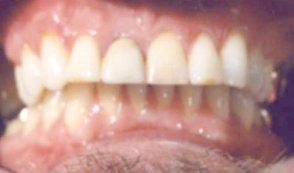
| ANGLE CLASS 1:
Dentists, especially orthodontists, use to classify the relation of upper and lower set of teeth / jaw .Regular situations with properly developed jaws and an even line of teeth is regarded as the normal bite, described as ANGLE - CLASS 1. See this picture . THIS SHOULD BE THE DESIRED DENTAL CLASS OF THE BRASS INSTRUMENTALIST . |
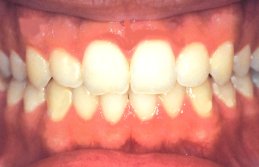 |
| ANGLE CLASS 2:
More or less this one has a so called overjet, that means, the upper frontal teeth are standing in front of the lower ones for up to a couple of millimeters and the lower dentition bites deep into the upper jaws space. This class comes along with two divisions. CLASS 2 can impact lots of problems for its owner, and not just trumpet playing related ones. |
|
| ANGLE CLASS 3:
Kind of vice - versa of CLASS 2. Reverse overjet. The lower set of teeth is placed in front of the upper one. Also, not very funny for airhorn artists. See picture below. |
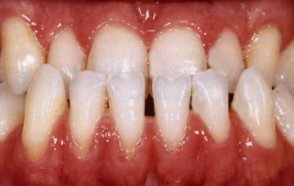 |
| FRONTAL OPEN BITE:
A situation, making it impossible to close frontal teeth for a sharp cutting bite. Upper and lower incisal teeth remain distant to eachother, while lateral teeth do contact. Can raise some problems in playing special horns. Picture. |
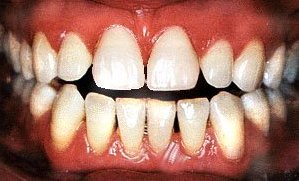 |
| DIASTHEMA:
A space between middle incisal teeth, could be a handicap when occuring too large. Sample picture shows situation. |
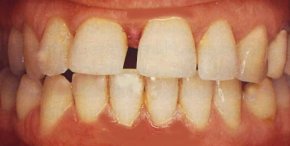 |
Now,there are lots of diagnostic findings
of combinations or alterations of what you have seen so far. Teeth and
jaws, lips etc.can be recognized as individual as fingerprints. Beside
this, we know about a huge amount of different diagnosisis like crowded
teeth etc..
And , there is still another truth:
One cannot neglect human body´s capability to adapt a lot to many
alterations of ideal standards. So it may be possible to play the horn
well in spite of limited physiological or anatomic deviations.
In fact, cases shown above can primarily
make it difficult to place the mouthpiece in a comfort, useful and precise
way. Accordingly, in the worst case it may happen that the player
injures soft tissues or teeth etc., i.e.,by using too much arm pressure
while trying to force playing high register notes.
There are still some more major diseases
not only musicians suffer from. Countless people lose their teeth in case
of
| PERIODONTITIS
what means a loss of tooth holding
tissue namely mandibular and maxillar bone, gum and special tissue which
connects root surface of tooth and bone. P. is primarily caused by a smear
layer of microorganisms and their metabolic products initializing inflammation
of gum by lack of maintenance. Secondary, an inflammation induced resoption
of jaw bone around the roots of teeth will appear, worst, if assisted by
functional disorders. If you detect bleedy dark red gum with a tendency
to shrink ("teeth are becoming longer by the time") run - don' t walk -
for a dental appointment.
Again: Refusing treatment of periodontic diseases leads into complete loss of teeth, no way out. P.needs early detection and there is not really a direct relation to your age, except most severe cases happen to develop faster when people are 40 years and older. |
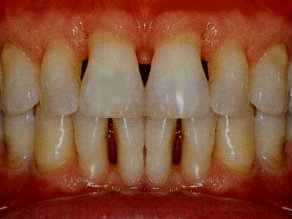 |
| BRUXISM AND DISEASES OF TMJ: CRANIO
- MANDIBULAR DISORDER
Very impressing a class of neuro-physiological
misfunction-based diseases shows damages of teeth and / or the temporo-mandibular
joint. Again, more or less movable teeth ( see above) may be found.
Bruxism may cause diseases of the temporo-mandibular
joint while it stresses related tissues.
Pic: Crunching teeth will cause loss of tooth material. Edges became sharp. |
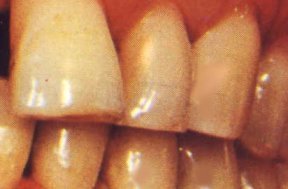 |
Top of page Copyright Dr. Jochen Dornbusch 1999
